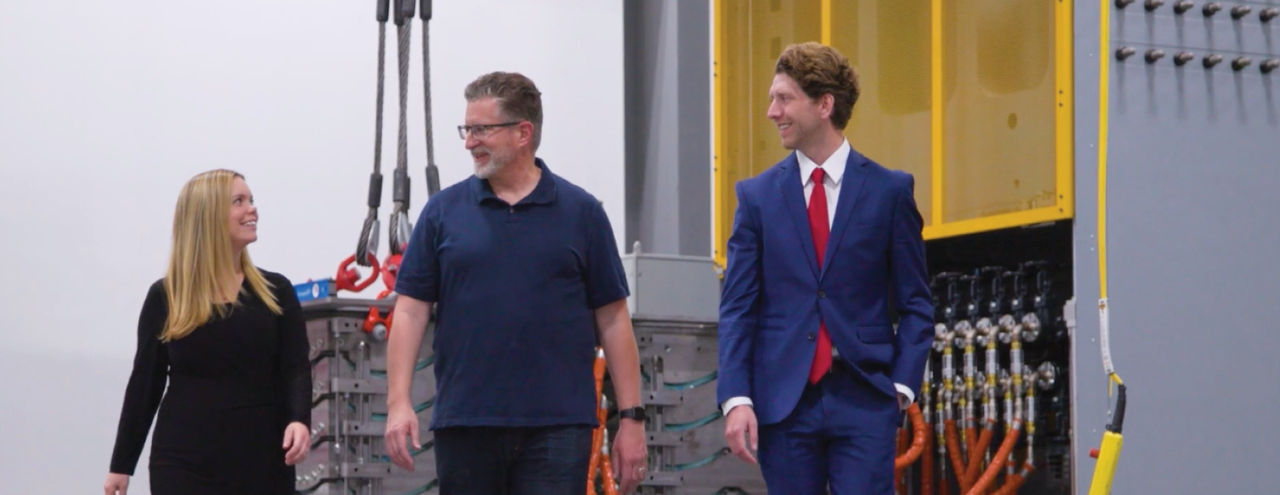Tapping into the Future:
Equipment Leasing Strategies for a Changing Beer Market
This year’s North Carolina Beer & Wine Wholesalers Association conference offered more than a snapshot of industry trends, it reflected a shift in how brewers are thinking about growth, resilience, and operational investment.
The pressures facing the category are real. Volume declines have continued into 2025, and consumer preferences remain in flux. But the outlook isn’t all headwinds. Shifts in production strategy, product mix, and packaging formats inevitably impact the distributor network that moves beer from supplier to shelf.
As brewers adapt, distributors are simultaneously navigating expanded product portfolios, evolving retail demand, and increasingly variable supply patterns. Many producers are using this moment to reevaluate where and how they invest—prioritizing flexibility, efficiency, and long-term return over short-term output.
Innovation Looks Different in 2025
Instead of focusing on the next headline-grabbing release, many brewers are diversifying more strategically. From non-alcoholic beer to ready-to-drink beverages and low-alcohol-by-volume formats, the focus is shifting to adjacent offerings that complement core brands and meet changing consumer expectations.
Non-alcoholic beer volume grew nearly 25% year-over-year, signaling growing demand for adjacent formats and production flexibility.1

Driving Productivity Through Strategic Investment
Efficiency is taking center stage. In an environment where pricing power is limited and growth in premium segments has leveled off, focusing on margin improvement through automation, minimizing downtime, and modernizing infrastructure, all while carefully managing capital investment.
U.S. beer shipments have dropped more than 10% in the past three years, prompting many brewers to prioritize lower-risk, flexible investment strategies.2
Planning for What You Can’t Predict
With shifting distributor dynamics and rising demand for adjacent formats like ready-to-drink (RTD), flexibility is becoming just as critical as scale. Breweries that can move quickly, whether adjusting packaging configurations or adapting production lines, are better positioned to respond to market shifts without losing momentum.
Top wine and spirit RTDs reached 4.5 million barrels in 2024, up from 3.3 million in 2023 and 2.4 million in 2022.3
More than ever, we’re seeing leaders structure their equipment investments with operational flexibility in mind. With category shifts unfolding faster than traditional planning cycles, the ability to act without delay, and adjust as needed, is proving to be a key advantage.
What We’re Seeing
In today’s market, success means balancing what’s right for today with what’s possible tomorrow. The strongest teams aren’t just responding to change, they’re planning for it with operational discipline and financial flexibility built in. And when those plans align with distributor realities, like SKU complexity, shifting volume, and packaging requirements, they help create a more resilient and connected supply chain.
Equipment financing remains a practical tool for both beverage manufacturers and distributors navigating this evolving landscape. Whether investing in new formats, modernizing infrastructure, or building in agility, aligning the right financing approach with your long-term strategy can create the space to grow, adapt, and stay competitive. For manufacturers and distributors prioritizing flexibility, fair market value leases offer end-of-term options to extend, upgrade, or return equipment, helping them stay responsive as needs evolve.
If you're evaluating options for growth or modernization, our dedicated Food & Beverage team can help you explore financing strategies for your capital projects. Contact First American
Sources:
- Circana multi-outlet + convenience data
- Beer Marketer’s INSIGHTS, BMI estimates, NCBWWA Conference 2025
- Beer Marketer’s INSIGHTS, All-Channel Volume Estimates
About the Contributor

Bill Burns
Vice President, Food & Beverage, First American Equipment Finance
Through tailored equipment financing solutions, Bill helps his clients secure the resources they need to thrive in their day-to-day operations and achieve their long-term goals. He takes pride in playing a small role in the success of the fast-paced companies he serves.
He holds a bachelor’s degree in communication from SUNY Geneseo, a master’s degree in athletic administration from SUNY Brockport, and a finance certificate from RIT Saunders School of Business. Since joining First American in 2017, Bill has brought a wealth of knowledge to his clients, serving as a trusted consultant and helping clients navigate challenges and opportunities with confidence.






